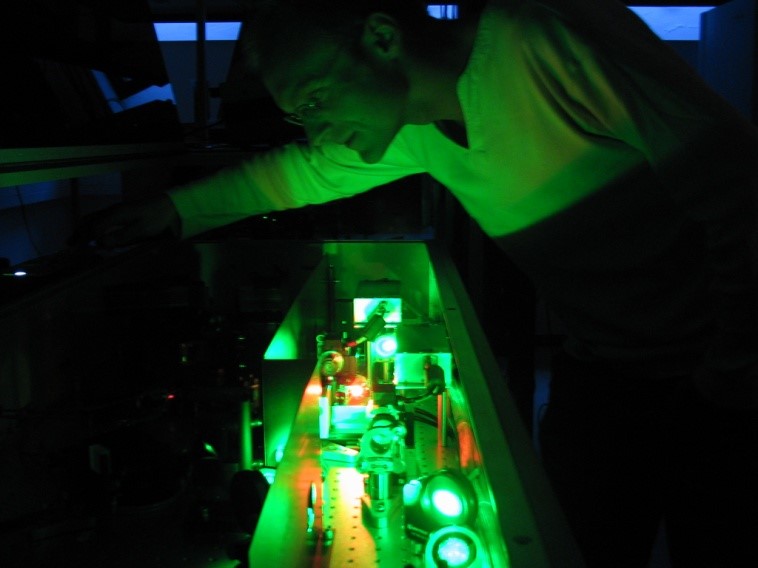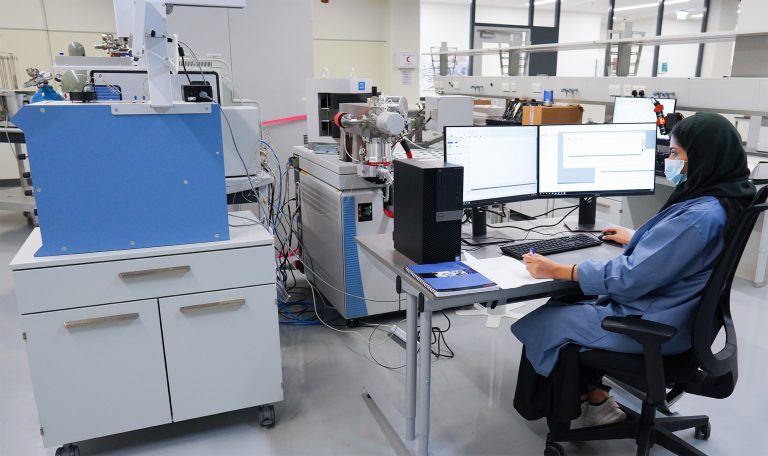CPG-TC | a Research & Technology Park Turning ideas into reality through distinguishing facilities, education, and research
The College of Petroleum Engineering & Geosciences Technology Center (CPG-TC) is an integral element of the R&D continuum emphasized by the College of Petroleum Engineering & Geosciences (CPG). CPG-TC is an innovation hub where products of basic and applied research are pushed to the market. The center is living the CPG vision of being integrative and truly multidisciplinary. The unique technical facilities of the center and the fundamental results that they generate are to act as a catalyst for entrepreneurs to develop innovative solutions to contemporary problems that are pertinent to the upstream sector of the Oil & Gas Industry. The aim is to promote strong partnerships between industry and academia through research projects, joint ventures, startup-companies, and more in line with a knowledge-based economy.
Facilities available at CPG-TC include a collaborative learning environment, office and lab space, including state of the art laboratories in chemistry and physical sciences. A natural focus includes petroleum engineering and cutting edge oil & gas technologies, though this is in no way limiting. Other technology areas of focus are remote sensing, GIS, and virtual reality applications, represented by our Remote Sensing Laboratory.
What CPG-TC Offers
- Opportunities for entrepreneurs - students and faculty alike to turn their upstream technologies into businesses.
- Advising, sparring, and resources for the creation of new startups.
- Various laboratories and ample technical support, available lab time, and equipment.
- Industry outreach and social networking through the hosting of events inviting both industry and researchers and students.
Laboratories

Nanophotonics Laboratory
There is a constant need for novel materials. The upstream sector is no exception. The nanophotonics laboratory is the heart of the ongoing efforts in the colloids and interface science programs to synthesize and characterize phosphorescent materials for tracer applications.

Femtosecond Laser Laboratory
A femtosecond is to a minute what a minute is to the age of the universe. At this very short time scale, it is possible to capture structural changes while they take place. The research in the femtosecond laser lab is most closely linked to the Oilfield Chemistry and Colloids and Interface Science programs at CIPR where the time-resolved techniques can be employed in addressing the fundamentals of tracers that work via light and molecular motions in micellar structures.

Microfluidics Laboratory
Microfluidic technology is focusing on the study of flow in porous media by means of visual observation of flow in printed or etched micromodels. Being able to observe the flow opens a new era of designing and optimizing EOR oilfield applications and of screening EOR processes with various chemicals. The high-pressure and high-temperature microfluidic (HPHT micromodel) flooding systems allow fast and cost-effective EOR process optimization and EOR fluids screening capabilities. The activity is linked to several of the CIPR programs and overall college objectivities with the principal link being to the Colloids and Interface Science and Oilfield Chemistry.

HPHT Flow Loop
This research facility is being developed to facilitate studies of multiphase flow and flow assurance in the oil and gas production system. It can be utilized for different fluid compositions, flow rates covering with flow velocity range from 0-10 ft/sec for liquid and 0-45 ft/sec for gases at high pressure up to 1500 psi, and temperatures between -10 and 180 oC. The advanced instruments and data acquisition systems will enable the study of all major flow assurance challenges (multiphase flow, wax, paraffin, asphaltene, and hydrates). The flow loop will be an integral part of the ongoing research in the OFC, CIS, and MOD programs.

Isotope Laboratory
The characterization of Isotopes is used in an incredibly broad spectrum of research areas in geosciences and petroleum engineering. Knowledge of isotopic composition and effects plays an important role in most of the CIPR programs. The CPG Isotope Facility houses instrumentation for the analysis of light stable isotopes (H, C, N, O, S) used as near-surface geochemical tracers, as well as heavy isotopes (U, Th, Rb, Sr, Re, Os) used in determining the age and origin of Earth crustal materials. Laboratory results will add significantly to CPG efforts in carbonate geosystems (diagenesis and chemostratigraphy), petroleum reservoir characterization, environmental geology, petrologic studies, and paleoceanography/paleoclimatology.

Remote Sensing & Digital Services (RSDS)
The Remote Sensing & Digital Services (RSDS) is focused on innovation in subjects relating to remote sensing in ways that can assist, promote, or further the goals of the university, especially in applications falling within the mission and vision of CPG. Currently, a special focus of RSL’s work includes the topic of 3D photorealistic outcrop models and the application of multispectral, hyperspectral, and RADAR remote sensing in geoscience and mineral exploration. RSDS activities include support of CPG students and researchers in their studies and fieldwork by providing satellite imagery and geospatial analysis, as well as support to capture, create, and analyze 3D digital outcrop models, supplementing current research and fieldwork techniques using cutting edge digital technology. The intersection and integration of satellite imagery, 3D capture, and custom data provisioning and analysis is an exciting place for RSL to be as we seek to serve others.
